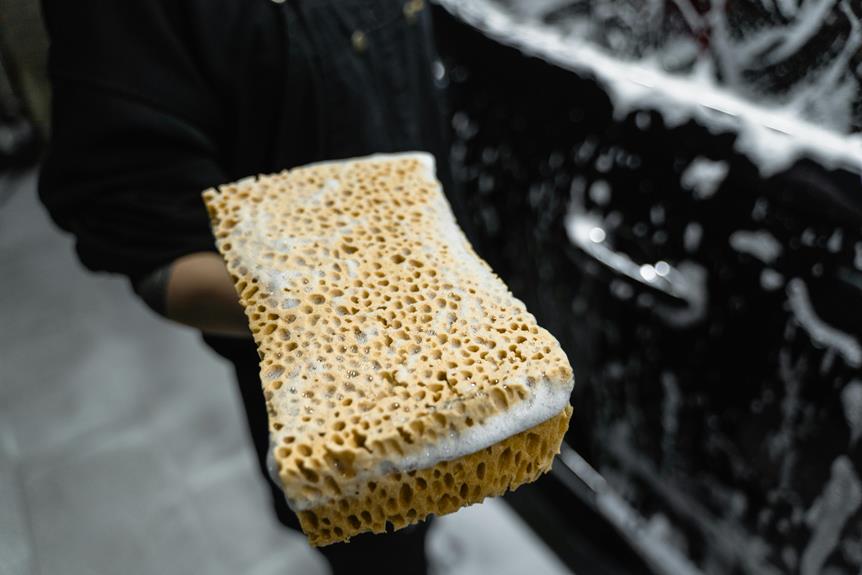
To keep your electronics in top shape, remember to power off and unplug before cleaning, using a microfiber cloth and compressed air for dust. Don't forget special attention to ports. Once dry, consider the best practices like software updates and surge protectors to maintain performance. Following these steps will help your electronics last longer and run smoothly.
Importance of Cleaning Electronics Regularly
Regularly cleaning your electronics is crucial in maintaining their performance and lifespan. Dust, dirt, and grime can accumulate on your devices over time, leading to potential issues like overheating, reduced efficiency, and even malfunctions. By incorporating a regular cleaning routine into your maintenance habits, you can ensure that your electronics continue to function optimally.
Cleaning your electronics also helps in preventing the buildup of harmful bacteria and germs. These pathogens not only pose health risks but can also affect the usability of your devices. A simple wipe-down with an appropriate cleaning solution can make a significant difference in the cleanliness of your gadgets.
Furthermore, maintaining clean electronics can enhance their overall appearance. A shiny, dust-free screen or a polished exterior not only looks better but also gives the impression of a well-cared-for device. Regular cleaning not only benefits the performance and longevity of your electronics but also contributes to a more pleasant user experience overall.
Tools and Materials You Will Need
To properly clean and maintain your electronics, gather the necessary tools and materials for effective upkeep. Start by ensuring you have a can of compressed air to remove dust and debris from hard-to-reach places like keyboard keys and vents.
A microfiber cloth is essential for wiping down screens and surfaces without scratching them. Isopropyl alcohol (70% or higher) paired with cotton swabs can help disinfect and clean surfaces touched frequently, such as mouse buttons and touchscreens.
A soft brush, like a clean paintbrush or a toothbrush with soft bristles, can be used to gently dislodge dirt from crevices. Additionally, a small screwdriver set may come in handy for opening up devices for deeper cleaning.
Remember to unplug your electronics and remove any batteries before cleaning to avoid damage. By having these tools and materials on hand, you'll be well-equipped to maintain the cleanliness and functionality of your electronics.
Step-by-Step Cleaning Instructions
When cleaning your electronics, ensure you have all the necessary tools and materials ready for the task. Begin by powering off and unplugging the device to prevent any accidents. Use a microfiber cloth to gently wipe down the exterior surfaces, removing dust and fingerprints. For tougher grime or sticky residue, slightly dampen the cloth with water or a small amount of electronic-safe cleaning solution.
Pay special attention to ports and openings, using a can of compressed air to blow out any debris carefully. Be cautious not to damage any components with excessive force. For screens, use a screen-safe cleaning solution sprayed onto a microfiber cloth to avoid damaging the display. Avoid spraying liquids directly onto the screen.
For keyboards, use compressed air to remove crumbs and debris between the keys. You can also use a cotton swab lightly dampened with isopropyl alcohol to clean around the keys. Finally, let all cleaned components dry completely before reconnecting and powering up your electronics.
Best Practices for Maintaining Electronics
To maintain your electronics effectively, establish a routine for safeguarding and prolonging their functionality. Start by keeping your devices in a cool, dry place to prevent overheating and moisture damage.
Regularly update software and firmware to ensure optimal performance and security. Use surge protectors to shield your electronics from power fluctuations and potential damage during electrical storms.
Avoid exposing your devices to extreme temperatures, as this can negatively impact their internal components. Additionally, clean your electronics regularly using appropriate tools such as microfiber cloths and compressed air to remove dust and debris that can affect performance.
When transporting electronics, use protective cases or sleeves to prevent physical damage. Finally, handle cables and connectors carefully to avoid bending or breaking them, which can lead to connectivity issues.
Conclusion
Now that you know how to safely clean and maintain your electronics, you can ensure they stay in top condition for longer.
By regularly cleaning your devices with the right tools and following the proper steps, you can prevent damage and extend their lifespan.
Remember to always use caution and follow best practices to keep your electronics running smoothly and looking like new.




